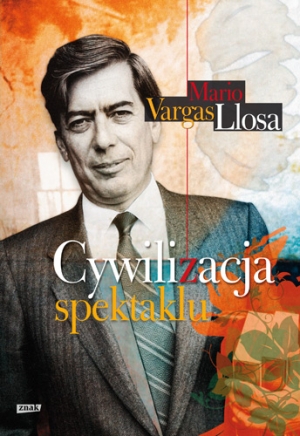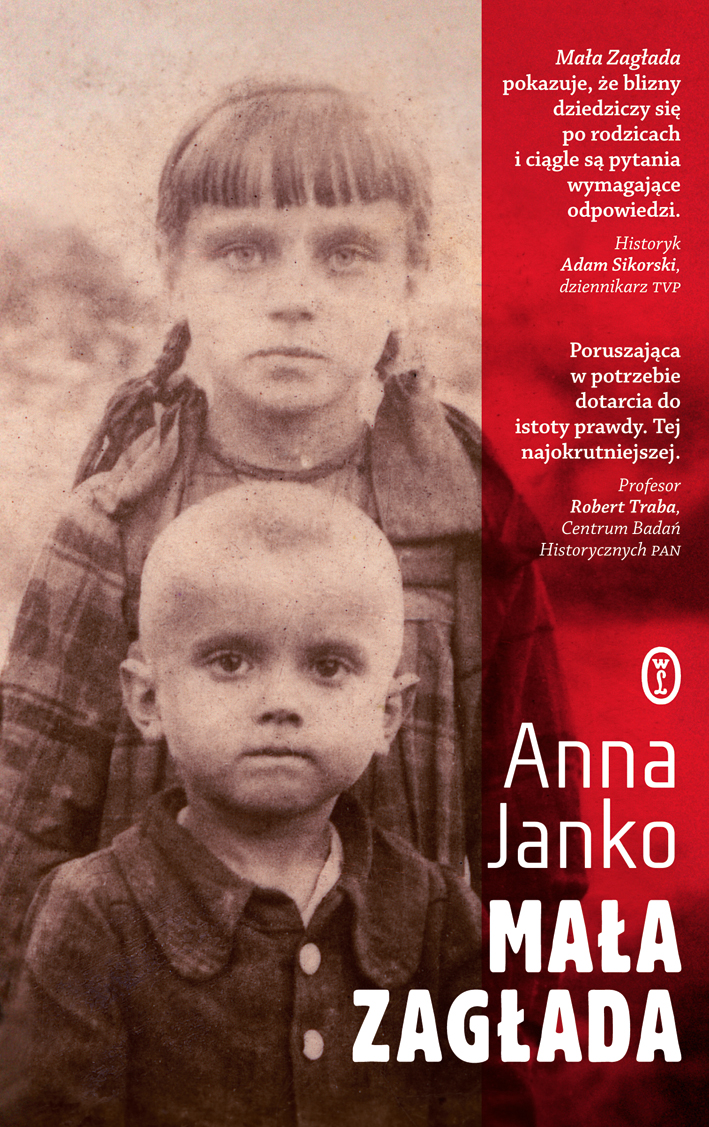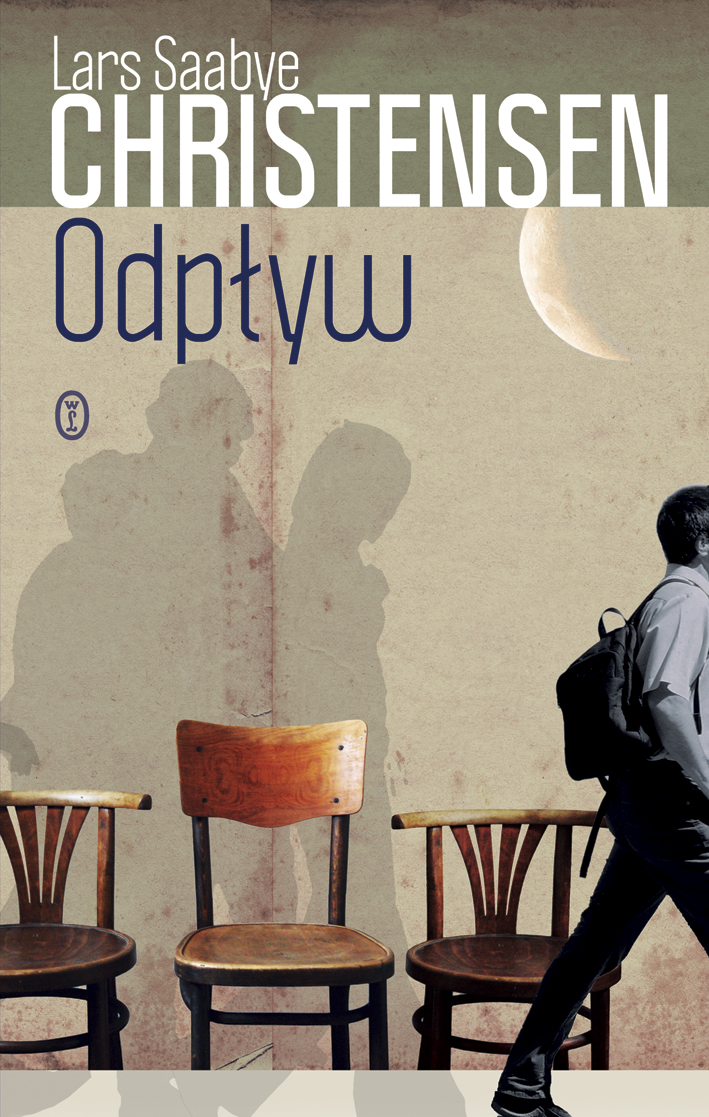
Wyspa łza
Joanna Bator
Znak
Data premiery: 5 stycznia 2015
Co robi Joanna Bator, którą prześladują słowa „znikła bez śladu”?
Szuka po omacku. Czeka na znak. Na Sandrę Valentinę, która w 1989 roku znikła bez śladu i do dziś nie odnaleziono jej ciała.
Pisarka i fotograf ruszają śladem zaginionej Sandry. Tam, gdzie kończy się jej trop, zaczyna się mroczna opowieść o miłości, samotności i pisaniu. O podróży na Sri Lankę, wyspie w kształcie łzy, bramie do świata Joanny Bator i jej bliźniaczki...
Zdjęcia Adama Golca ilustrują tę mroczną podróż na wyspę, gdzie ludzie i miejsca istnieją jednocześnie w rzeczywistości i w świecie czarnej magii.
Patrz też:
Ciemno, prawie noc
Rekin z parku Yoyogi

Czarny Anioł. O Ewie Demarczyk
Angelika Kuźniak , Ewelina Karpacz-Oboładze
Znak
Data premiery: 12 stycznia 2015
Ewa Demarczyk z dnia na dzień stała się gwiazdą wielkiego formatu. W 1964 roku podbiła Paryż. Wróżono jej ogromną karierę. Miała najlepszych „tekściarzy” — Baczyńskiego, Tuwima, Dymnego. Dbała o każdy szczegół. Była wielkim odkryciem, wielkim spełnieniem i nagle zniknęła.
Autorki odkrywają źródła jej wielkości , opowiadają też o tym, ile kosztowały artystkę pełne pasji koncerty i całkowite oddanie sztuce. Czarnego Anioła polskiej sceny wspominają w książce m.in. Zygmunt Konieczny, Andrzej Zarycki i przyjaciele z Piwnicy pod Baranami.
Ewa Demarczyk od wielu lat nie udziela wywiadów. Teraz dostajemy jej niezwykły portret.

Znikająca Europa
Katharina Raabe, Monika Sznajderman (red.)
Wydawnictwo Czarne
Data premiery: 15 stycznia 2015
Autorzy: Jurij Andruchowycz, Christoph Ransmayr, Marius Ivaškevičius, Vetle Lid Larssen, Geert Mak, Carola Susani, Karl-Markus Gauß, Dagmar Leupold, Fatos Lubonja, Mircea Cărtărescu, Lavinia Greenlaw, Lidia Jorge, Tatjana Gromača, Swietłana Wasilenko, Andrzej Stasiuk.
Wspólne przedsięwzięcie niemieckiego wydawnictwa Suhrkamp i Wydawnictwa Czarne.
Opowieść o „mówiących ruinach, przesuniętych granicach i niewidzialnych miastach” czyli o tych miejscach na mapie Europy, w których coś nieodwołalnie zmierza ku końcowi, zmienia się nie do poznania, podupada. O miejscach opuszczonych, zdradzonych, skazanych na wegetację, nikomu już niepotrzebnych. O miejscach niszczonych czasem przez człowieka, historię, naturę, czasem przez obojętność i zaniechanie. Książka-inwentarz znikającej Europy. Alternatywna historia oraz geografia naszego kontynentu, a zarazem esej z dziejów mentalności.

Cywilizacja spektaklu
Mario Vargas Llosa
Znak
Data premiery: 15 stycznia 2015
Triumf sensacji w prasie i frywolność polityki, banalizacja sztuki i literatury, przyjemność jako jedyny cel w życiu – oto esencja współczesnej kultury, fabryki rozrywki.
Mario Vargas Llosa zabiera ważny głos w dyskusji o roli mediów i obnaża prawdę o naszych czasach.

Mała Zagłada
Anna Janko
Wydawnictwo Literackie
Data premiery: 15 stycznia 2015
Sochy na Zamojszczyźnie, 1 czerwca 1943 roku. Wystarczyło parę godzin, by wieś przestała istnieć. Budynki zostały spalone. Mieszkańcy rozstrzelani. Pośród zgliszczy pozostał jeden dom, nieliczni dorośli i kilkoro dzieci.
Wśród nich — dziewięcioletnia Terenia Ferenc, matka Anny Janko. Dziewczynka widziała, jak Niemcy mordują jej rodzinę. Nieludzki obraz towarzyszył jej przez lata spędzone w domu dziecka, by nigdy nie dać o sobie zapomnieć…
Mała Zagłada Anny Janko nie jest jeszcze jedną tragiczną opowieścią rodzinną wyciągniętą z lamusa II wojny światowej. To mocna, jak najbardziej współczesna rozprawa z traumą drugiego pokolenia — naznaczonego strachem. Brutalna, naturalistycznie opisana historia pacyfikacji polskiej wsi staje się w niej punktem wyjścia do przedstawienia etycznej i egzystencjalnej bezradności.
Patrz też:
Pasja według św. Hanki

Odpływ
Lars Saabye Christensen
Wydawnictwo Literackie
Data premiery: 15 stycznia 2015
W najnowszej książce norweski pisarz powraca do swoich ulubionych wątków i tematów: relacji dziecko–rodzice, dojrzewania i drobnych niedoskonałości fizycznych, które definiują osobowość. Znakiem rozpoznawczym Saabye Christensena są też postaci kobiet świetliste, tajemnicze i emanujące swoistą melancholią.
Książka została uznana przez prasę za arcydzieło i jest uważana za najlepszą powieść autora.
Ostry, zabawny i wstrząsający Odpływ to propozycja dla wszystkich, którzy kochają filmy braci Coen i nie mogą się uwolnić od chłodnego czaru prozy Karla Ove Knausgårda. Saabye Christensen hipnotyzuje tak samo, ale czułość, z jaką opisuje swoich niedoskonałych bohaterów, sprawia, że Odpływ emanuje niezwykłym ciepłem.

Moscoviada. Powieść grozy
Jurij Andruchowycz
Wydawnictwo Czarne
Data premiery: 15 stycznia 2015
Mieszkasz na szóstym piętrze, ściany poobwieszałeś Kozakami i działaczami ZachodnioUkraińskiej Republiki Ludowej, z okna oglądasz moskiewskie dachy, smętne topolowe aleje, wieży telewizyjnej w Ostankino nie widzisz – widać ją z pokojów, znajdujących po drugiej stronie korytarza – ale jej bliskość odczuwasz w każdej chwili...
Moscoviada opowiada o jednym dniu z życia Ottona von F., mieszkańca moskiewskiego akademika. Studenci ze wszystkich republik radzieckiego imperium przy wtórze wietnamskich pieśni piją wódkę i napój winogronowy, zagryzając suszonymi rybkami i tłustym kaukaskim pilawem. Otton także nie wylewa. Jest wybitnym poetą, tak jak wszyscy jego sąsiedzi.
Powieść Andruchowycza to fantasmagoryczny kalejdoskop ukraińskich wierzeń, przejść z bezpieką, uprzedzeń rasowych i etnicznych do współmieszkańców ZSRR. To oniryczno-deliryczna szalona wyprawa, u której kresu spotykają się caryca Katarzyna, car Iwan Groźny i Feliks Edmundowicz.

Motory rewolucji
Grzegorz Szymanik
Wydawnictwo Czarne
Data premiery: 22 stycznia 2015
Ukraina, Egipt, Syria, Czeczenia. Punkty zapalne, gdzie ludzie buntują się przeciwko satrapom i walczą o swoje prawa. Miejsca, gdzie jeździ Grzegorz Szymanik, jeden z najciekawszych reporterów młodego pokolenia. Interesuje go nie tylko wielka historia, ale przede wszystkim ludzie, którzy ją tworzą: zaangażowani, niepokorni, pragnący zmian. Szymanik spotyka się ze swoimi bohaterami na kijowskim Majdanie, kairskim placu Tahrir czy w ostrzeliwanych przez żołnierzy Baszszara al-Asada syryjskich wioskach. Wszędzie słucha relacji o ludzkich doświadczeniach – o brutalności, agresji i bezkarności władzy, o okupionych krwią dążeniach do reform społecznych. Oszczędny język jego tekstów nie pozostawia czytelnika obojętnego wobec konfliktów, które wciąż nie znajdują rozwiązania.

Nawozy sztuczne. Dla artystów i sprzątaczek
Tadeusz Nyczek
Wydawnictwo Literackie
Data premiery: 29 stycznia 2015
Najnowsza książka cenionego krytyka literackiego i teatralnego, podsumowująca najważniejsze wydarzenia ostatnich lat w polskim teatrze.
Nawozy sztuczne to zbiór publikacji z lat 2008-2014. Prawie wszystkie ukazały się w miesięczniku „Dialog”.
Opisy książek pochodzą ze stron wydawnictw


 Log in with Facebook
Log in with Facebook 












 'Why is it called Greenland when there is only ice there?' I asked. 'Because the first people who reached it found a beautiful flower called convallaria, Barnum.'"
'Why is it called Greenland when there is only ice there?' I asked. 'Because the first people who reached it found a beautiful flower called convallaria, Barnum.'" Sinnataggen, Frogner Park. Famous statue of an angry child."
Sinnataggen, Frogner Park. Famous statue of an angry child." "
" 





